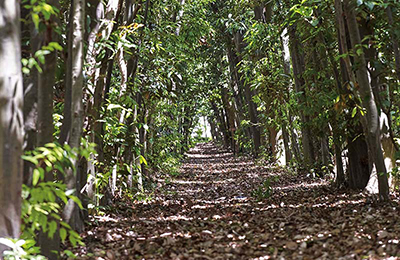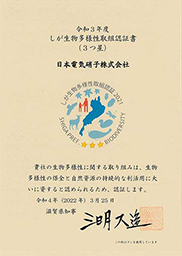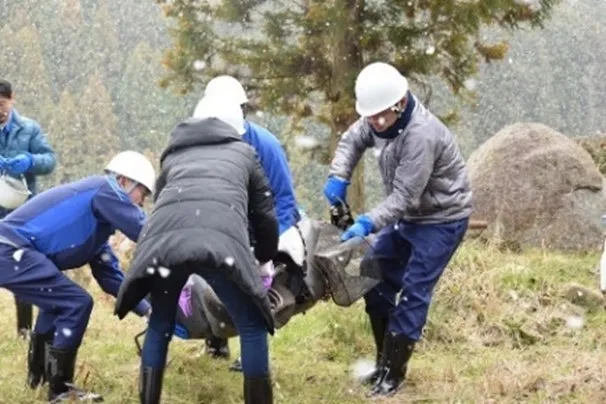Biodiversity
Biodiversity Conservation Initiatives
Protecting the global environmental as an element of our business operations is an important social responsibility as a corporation. “Consideration for the environment” is one of our key values, and we conduct our activities on the belief that waste-free manufacturing operations are both economical and environmentally friendly while also helping to preserve biodiversity.
Our Company has multiple manufacturing sites near Lake Biwa, and our CSR activities prioritize protecting the environment and contributing to local communities. Our environmental initiatives include efforts to preserve biodiversity, by helping maintain the natural forests near our business sites and supporting local forest conservation efforts.
We are committed to the principle of leaving nature untouched, except for areas that necessarily must be used for our business operations. The Notogawa Plant maintains natural forests with native vegetation of the local Suzuka Mountain Range, and has always carefully preserved streams near its facilities. The plant also grows flowers in a greenhouse inside the plant, which it uses to beautify the local community.
Forests play a vital role supporting the ecosystem, including nurturing the water supply of Lake Biwa, providing habitats for numerous animals and plants, and maintaining biodiversity. We support forest stewardship activities by regularly purchasing J-credits and joining volunteer maintenance programs led by the local forestry cooperative. In 2021, in collaboration with the local government, we signed the Lake Biwa Carbon Credit Partner Agreement with the Shiga Prefecture Afforestation Public Corporation, a general incorporated association led by governor Taizo Mikazuki.
For close to half a century, our employees have been taking part in a variety of community activities, joining events to preserve riverside forests, exterminate invasive fish species, and protect the ecosystem of Lake Biwa.
Thanks to these efforts, in 2022, the Shiga Prefecture’s Biodiversity Initiative Certification System renewed our three-star certification, the highest possible rating.
We also provide our supply chain business partners with our Guideline for Green Procurement* and work together to preserve biodiversity.
These are just some of the many ways we are working to conserve local biodiversity.


